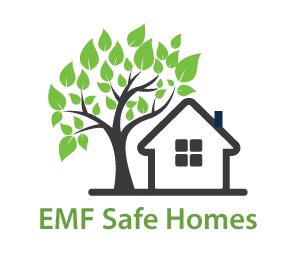Building Biology
What is Building Biology?
The goal of Building Biology is to create healthy homes free of indoor air pollutants, free of tap water pollutants, and free of electromagnetic pollutants. Access to fresh air and sunlight and even temperatures are achieved to give inhabitants a wholesome environment.
Building Biology was brought to the United States in 1987 by Helmut Ziehe, a German International architect. He discovered the homes he was the resident engineer for were unlivable by the people in the North Africa community he was involved with in 1980. He realized there was more to making a home livable than creating the roof and walls.
With the help of the German Bau Biologie Institute, he was able see that the built environment has to support the health of the people living in it. In addition, it has to support the planetary, earth, and surrounding environment through the building materials used.
Eventually, Helmet ended up in Clearwater, Florida were he established the Building Biology Institute. Since then Building Biologists have been trained all over the world, going into homes and assessing the health of the built environment and helping people make their homes more livable.
What are EMFs?
Ever since the 1890s when the first electricity was wired to homes, the electricity in the environment has increased every year. The fields they affect can be as small as millimeters or as large as feet and miles. The electric fields in your walls will reach out about six feet into the living space. The weak DC electric signals in your body may reach out six feet as in the magnetic field of the heart or stay closer to the body, depending on the system. The earth’s EMF, called the Schumann Frequency, cycles for thousands of miles around the globe.
The high powered devices we use, the smart meters, the cell towers, the electricity in our homes, these all are considered
EMFs. The problem arises when these high powered vibrations collide with our the body’s weak DC currents. Our bodies are electric. Epidemiological studies show the rise of disease has increased alongside the increase of the built electrical environment.
EMFs are areas of influence, made up of an electric and magnetic wave. They are in our bodies, in our earth, and many are man made. When the man made ones interfere with our biological EMFs, disease occurs.
Site and Community Design
1. Verify that the site is free of naturally-occurring and human-made health hazards.
2. Place dwellings so occupants are undisturbed by sources of human-made air, soil, water, noise and electro-pollution.
3. Place dwellings in well-planned communities that provide ample access to fresh air, sunshine and nature.
4. Plan homes and developments considering the needs of community, families and individuals of all ages.
Electromagnetic Radiation Health
5. Provide an abundance of well-balanced natural light and illumination while using color in accordance with nature.
6. Minimize building material interference with vital cosmic and terrestrial radiation.
7. Adopt appropriate strategies to minimize exposure to harmful Electromagnetic radiation generated as a result of building electrification
8. Adopt appropriate avoidance and shielding strategies to minimize exposure to radio frequency radiation generated by wireless devices within the building and from wireless sources outside the building.
9. Avoid use of building materials that have elevated radioactivity levels.
Indoor Air and Water Quality
10. Assure low total moisture content and rapid desiccation of wet construction processes in new buildings.
11. Provide for ample ventilation.
12. All building materials shall be non-toxic with neutral or pleasant natural scents using natural and unadulterated building systems and materials.
13. Use appropriate water and moisture exclusion techniques to prevent interior growth of fungi, bacteria and dust mites. Techniques to favor mass flow-through envelope enclosures with high hydric buffering capacity.
14. Assure best possible water quality by applying purification technologies if required.
Occupant Well-being
15. Allow natural self-regulation of indoor air humidity, sound attenuation and healthy ion balance using hygroscopic (humidity buffering) and sorbent materials and finishes.
16. Design for a climatically appropriate balance between thermal insulation and thermal storage capacity.
17. Plan for climatically appropriate surface and air temperature.
18. Use appropriate thermal radiation strategies for heating buildings including passive solar wherever viable.
19. Provide adequate acoustical protection from harmful noise and vibration.
20. Utilize physiological and ergonomic knowledge in interior and furniture design.
21. Consider proportion, harmonic measure, order and shape in design.
Environmental Protection, Social Responsibility and Energy Efficiency
22. Materials and methods of construction shall promote human health and well-being from the extraction of raw materials, through to end-of-building’s life.
23. Avoid the use of building materials that deplete irreplaceable natural resources or are being harvested in an unsustainable manner.
24. Minimize energy consumption throughout the life of the building utilizing climate-based and energy efficient design, energy and water saving technologies and renewable energy.
25. Consider the embodied energy and environmental life cycle costs when choosing all materials used in construction.
Updated by: Paula Baker-Laporte, Lawrence Gust, for: Building Biology Institute® BBI Board approved 1.17.20
